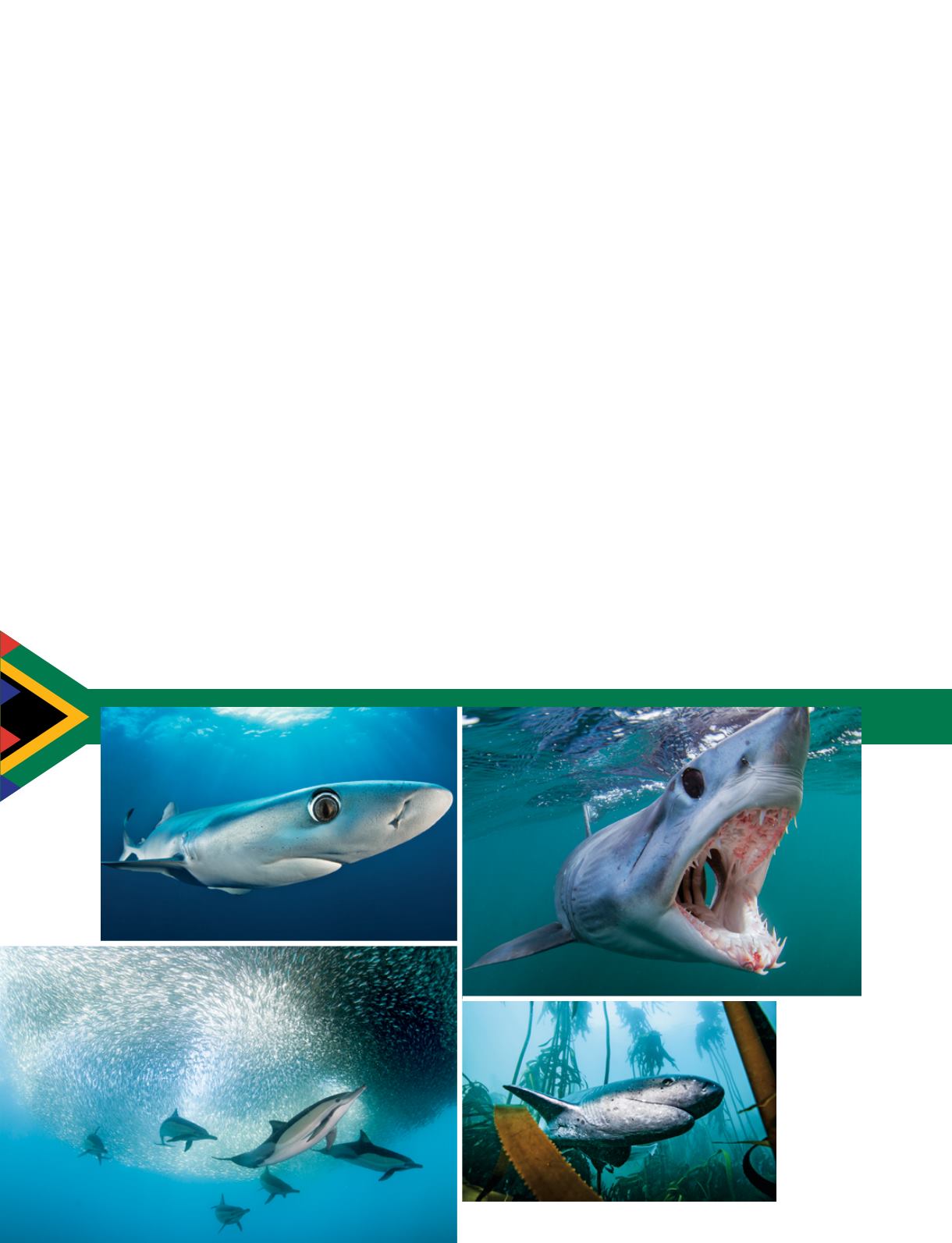
66
|
FALL 2013
False Bay
Cape Town, South Africa’s mother city, is situated at the
southwestern tip of Africa, and it’s the region’s hub for
expedition travel.
False Bay
is only a 35-minute drive from
Cape Town’s city center. From March to June massive shoals
of sardines and anchovies enter False Bay, and this influx of
prey attracts a host of predators. Massive schools of dolphins
crash through the shoals of bait fish, which are simultaneously
attacked by squadrons of diving Cape gannets. The annual
sardine run starts in False Bay around March each year, and
the size of the dolphin schools is astonishing.
This influx of common dolphins has brought a new
predator into the bay: Orcas are now being spotted here
for the first time. The orcas along the Cape coast appear
to be dolphin-hunting specialists, and the action is intense.
On numerous occasions we have witnessed pods of orcas
running down schools of dolphins, stunning and killing their
prey with dramatic breaches into the fleeing masses.
By early June the schools of baitfish have moved up the
east coast, and the schools of dolphins, flocks of gannets
and pods of orcas have for the most part moved on. The
next wave of seasonal predators will have begun arriving in
False Bay around late April. That’s when the area’s legendary
flying great white sharks (as seen in Planet Earth, Air Jaws
and more than 50 other nature documentaries) start showing
up at Seal Island. The aptly named island is home to Africa’s
largest island-bound seal colony, which numbers around
65,000 at its peak. By early June the young seals have been
weaned off their mothers’ fat-rich milk and start heading
out to feed and fend for themselves. That’s when the energy
around Seal Island really ratchets up, and unbridled action
involving the ocean’s most famous fish takes center stage.
In any given season, the Apex Shark Expeditions crew
records around 600 to 800 predatory events around this tiny
island. Nowhere else on earth offers such a good chance of
seeing this spectacular behavior. The sharks are successful in
about 50 percent of all hunts; their average length is about
11 or 12 feet.
For those who need to get their hair wet, cage diving offers
an opportunity — once the early morning’s predations slow
down — to get close to the sharks in their domain. Fifteen-
to 20-foot visibility is normal, and water temperatures are
generally brisk (in the upper 50s°F).
Seal Island is unique among great white shark diving
destinations in that it offers visitors the opportunity to watch
the sharks hunting and breaching as well as a chance to cage
dive — all on the same trip (weather permitting, of course).
By late August seasonal changes occur in the bay; winds out
of the northwest begin shifting to come out of the southwest
and then the southeast. This brings another sizable, seasonal
visitor into the bay: Southern right whales move in to mate
and calve. Boat-based whale-watching trips from Simon’s
Town take passengers within a stone’s throw of the whales;
people can also enjoy excellent land-based whale watching.
Local dive operators generally report the best reef-
diving conditions in the bay during winter (May through
September). Wrecks and soft corals abound, and
nudibranchs and a host of temperate-water fish add interest
to most dives. One of the truly spectacular — and very
accessible — dives in the bay is with the large, endemic
Clockwise from
top left: blue
shark in clear
water 20 miles
off Cape Town’s
spectacular
coastline; mako
shark gaping
at the camera;
sevengill shark
at Pyramid
Rock, False Bay;
common dolphins
and baitball
CHRIS FALLOWS
JUAN VENTER
TOBIAS FRIEDRICH
CHRIS FALLOWS


